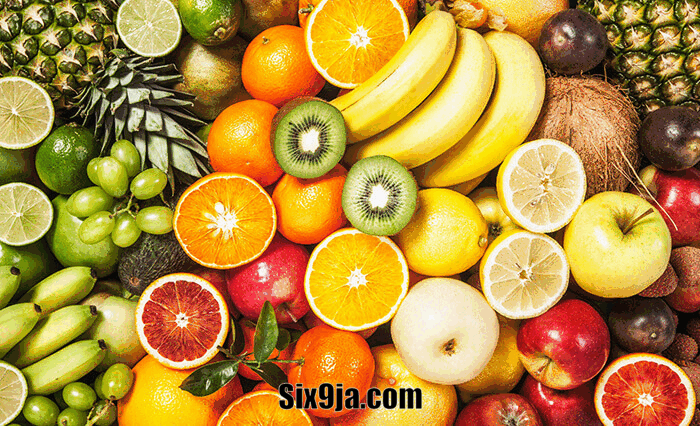Fruit has the ability to enhance heart health. That’s because it’s packed with nutrients that can lower your blood pressure and cholesterol, both of which are beneficial for the general health of your heart. Also, studies demonstrate a dramatically decreased risk of developing high blood pressure in persons who consume four or more portions of whole fruit each day.
Fruits are a great source of fiber as well as important vitamins and minerals. Fruits also include a variety of antioxidants, including flavonoids, which are good for your health.
Today I’d like to talk about fruits that you can eat to stay strong, healthy, and young. They are an unsuitable fruit for small children or the elderly.
A good diet, regular exercise, proper sleep, and stress management are all necessary for treating high blood pressure. If you have high blood pressure, your doctor may advise you to take certain medications as well as make lifestyle changes. Both of these drugs and lifestyle changes have distinct roles in blood pressure management and must be used as prescribed by your doctor.
Fruits play an important role in preventing and controlling cardiovascular illnesses, including high blood pressure, due to their high fiber, antioxidant content, and mineral content (such as potassium and magnesium).
Fruits and vegetables have numerous health benefits. The American Heart Association recommends eating four to five servings of fruits every day. Although a single serving of 100% juice can replace one of your daily fruit portions, eating the fruit is preferable to drinking its juice. This is due to the fact that eating the entire fruit adds vital fiber to your diet. Also, because juices are less satisfying than fruits, there is always the risk of overconsumption. Always prefer 100% juices over juices with additional sugars or sodium.
20. Kiwis
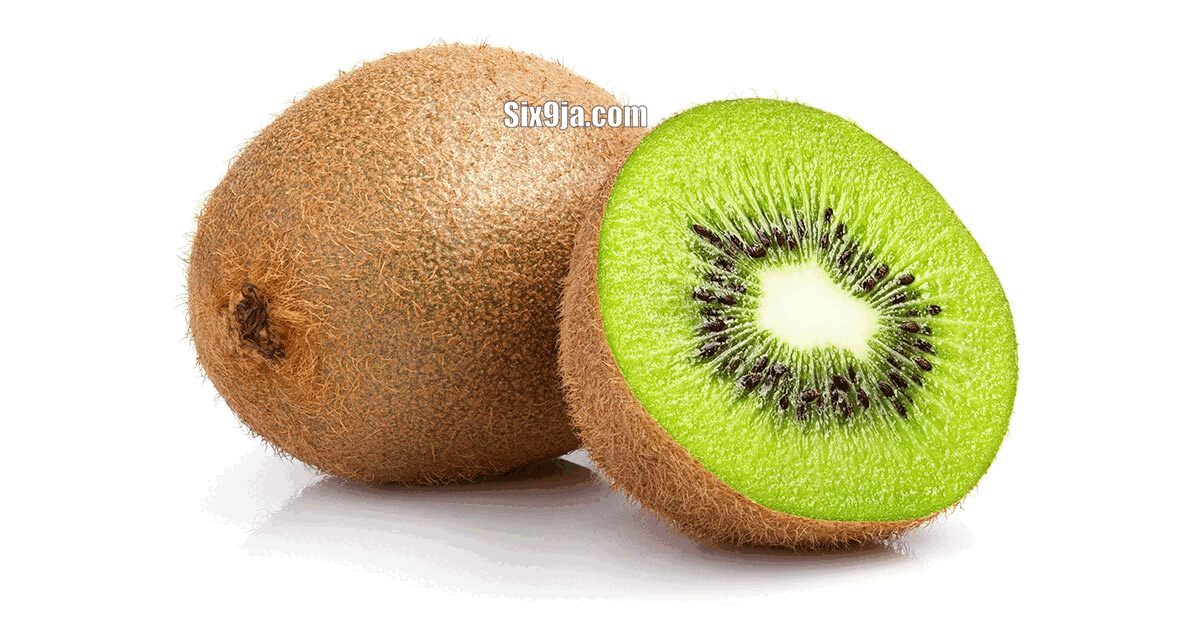
Kiwis
Kiwifruit can be eaten raw, juiced, baked with, served with meat, or used as a garnish. The entire fruit, including the skin, is edible; however, the skin of the fuzzy kinds is sometimes rejected due to its roughness. Sliced kiwi fruit has long been used as a garnish for pavlova, a meringue-based dessert, atop whipped cream. In China, kiwifruit was traditionally not eaten for pleasure, but was instead given as medicine to children to help them develop and to mothers who had given birth to help them recuperate.
Actinidain (sometimes written actinidin) is found in raw kiwifruit and is economically beneficial as a meat tenderizer and maybe as a digestive aid. Since actinidin digests milk proteins, raw kiwifruit should not be used in desserts containing milk or other dairy products. This is true for gelatin-based sweets because actinidin dissolves the proteins in gelatin, causing the dessert to liquefy or prevent it from hardening. Aside from the vitamin C, potassium, and antioxidants present in kiwi, the combination of folate, magnesium, and B-vitamins contained in this fruit might help you relax.
19. Grapes

Grapes
Consuming whole grapes could help reduce the risk of type 2 diabetes. Eating more blueberries, grapes, and apples is “substantially related,” according to a long-term research of over 190,000 healthy people, with a lower risk of getting the illness.
Based on their intended use, commercially grown grapes can typically be categorized as either table grapes or wine grapes: eaten raw (table grapes) or used to produce wine (wine grapes). Although they almost all come from the same species, Vitis vinifera, table grapes and wine grapes differ greatly from one another thanks to selective breeding. Table grape cultivars often produce large, seedless fruits with comparatively thin skin (see below).
Crushing and mixing grapes into a liquid yields grape juice. The juice is frequently converted into wine, brandy, or vinegar through fermentation or retail sale. Pasteurized grape juice does not contain alcohol since it will not ferment if kept sterile, eliminating any naturally present yeast.
18. Cantaloupe
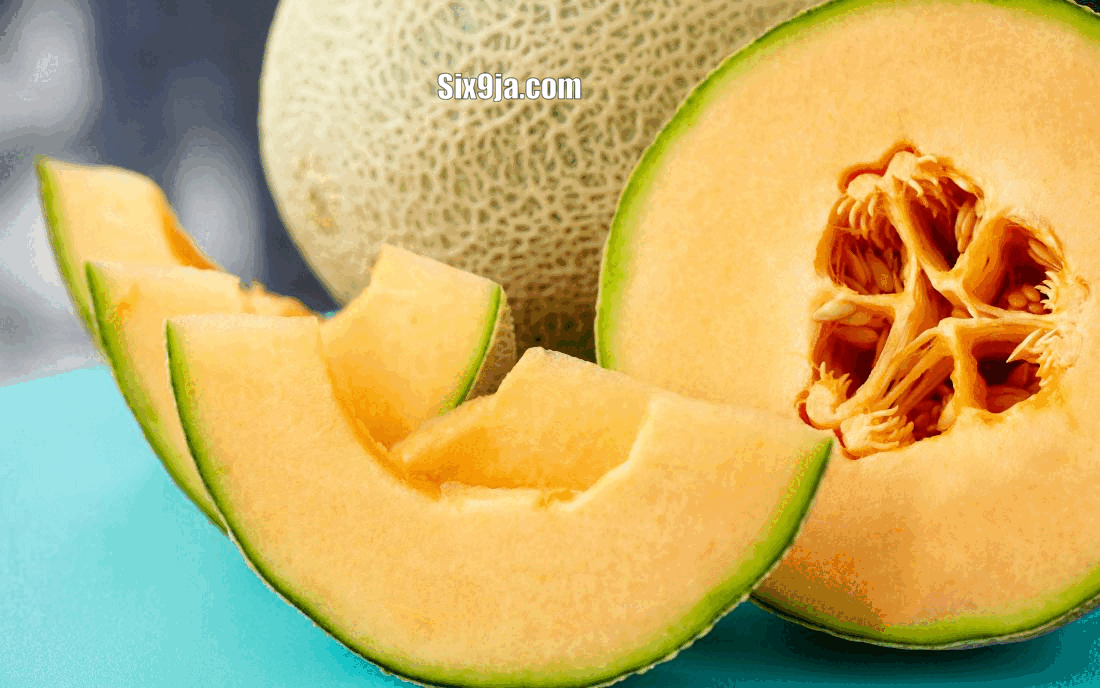
Cantaloupe
Typically, cantaloupe is eaten fresh, as a salad, or as a sweet dish with ice cream or custard. An antipasto staple is melon slices wrapped with prosciutto. The edible seeds can be dried and eaten as a snack.
Cantaloupe is mostly water, like many other fruits and vegetables. Fresh cubes have 144 calories per cup, 6% of your daily fiber requirement, and no fat or cholesterol. One of the fruits and vegetables most frequently associated with foodborne diseases is cantaloupe. Its rough, net-like rind may contain pathogenic organisms. Using a vegetable brush and running water, clean the outside. After each cut, rinse your knife to prevent contamination.
17. Strawberries
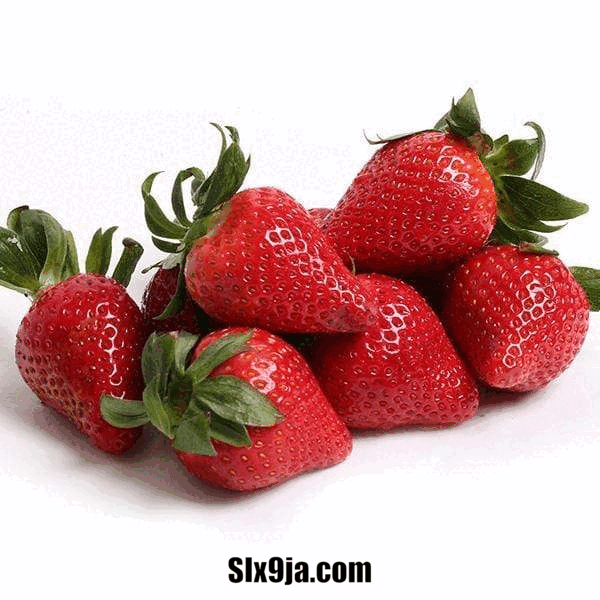
Strawberries
Strawberries can be dried, used to make prepared foods like cereal bars, frozen, turned into jam or preserves, or consumed fresh. Dairy goods like strawberry milk, strawberry ice cream, strawberry milkshakes/smoothies, and strawberry yogurt sometimes include strawberries or strawberry flavorings.
Especially vitamin C, strawberries are a significant source of antioxidants. Half a cup of strawberries provides around 150% of your daily value. The same serving also has up to 9 grams of fiber and only 80 calories, helping you get the most flavor and satiety for the fewest calories. Make delicious delicacies with their sweetness!
16. Avocados
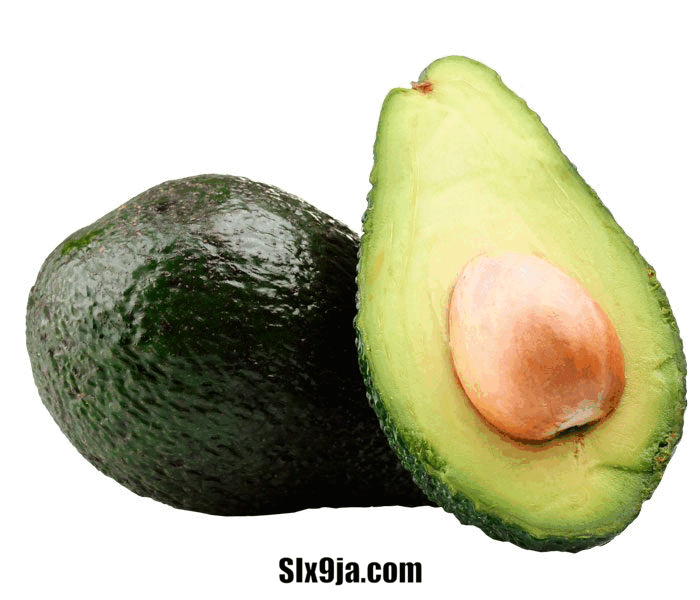
Disease can be prevented and reversed with the aid of a healthy lifestyle and nourishing diet. You can include avocados as a healthy food. Avocados provide you with vitamins, minerals, and excellent fats that keep your body healthy and prevent disease. Avocados may protect against:
Avocados contain little sugar. They also include fiber, which prolongs your feeling of fullness. According to one study, those who included a fresh avocado half in their lunch had less appetite for food during the following three hours than those who did not.
15. Pears
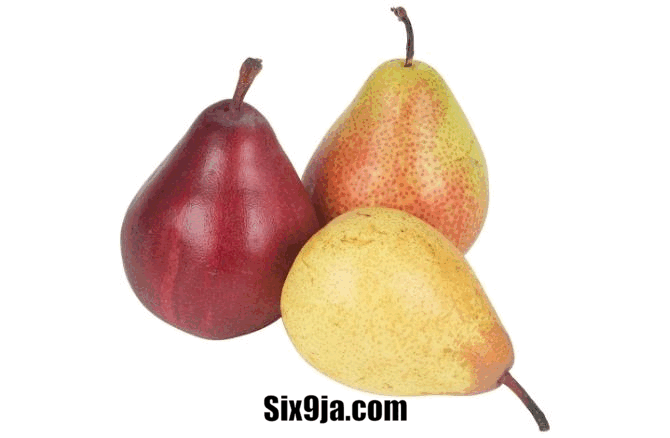
Pears
Pears can be eaten fresh, tinned, dried, and as juice. The juice can also be added to jams and jellies, typically along with other fruits like berries. Perry, sometimes known as pear cider, is prepared similarly to how apple cider is made from fermented apple juice. A colorless, unsweetened fruit brandy called eau de vie de poire can be made by distilling perry.
Until they are mature, pears can be kept at room temperature. When the flesh around the stem yields to light pressure, a pear is ripe. Pears that are ripe should be kept in the refrigerator for two to three days, uncovered and in a single layer.
14. Limes
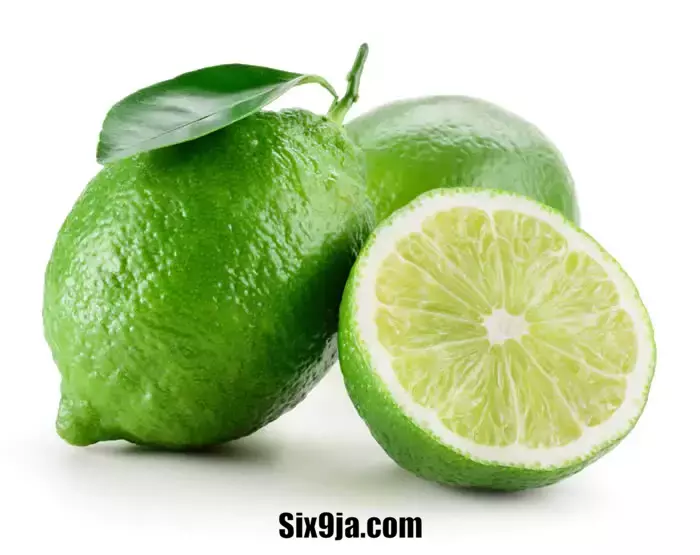
Compared to lemons, limes have more sugar and acid. Fresh limes can be squeezed for lime juice, or you can buy unsweetened or sweetened lime juice in bottles. In addition to being a component of numerous cocktails (usually as a sour mix), lime juice is used to make limeade.
88 percent of a raw lime is water, 10 percent is carbs, and less than 1 percent is fat and protein (table). With other nutrients present in low DV quantities, only vitamin C concentration at 35% of the Daily Value (DV) per 100 g serving is important for nutrition (table). Around 47 g/L of lime juice is citric acid, which is somewhat less than that of lemon juice, roughly twice that of grapefruit juice, and about five times that of orange juice.
13. Pineapple
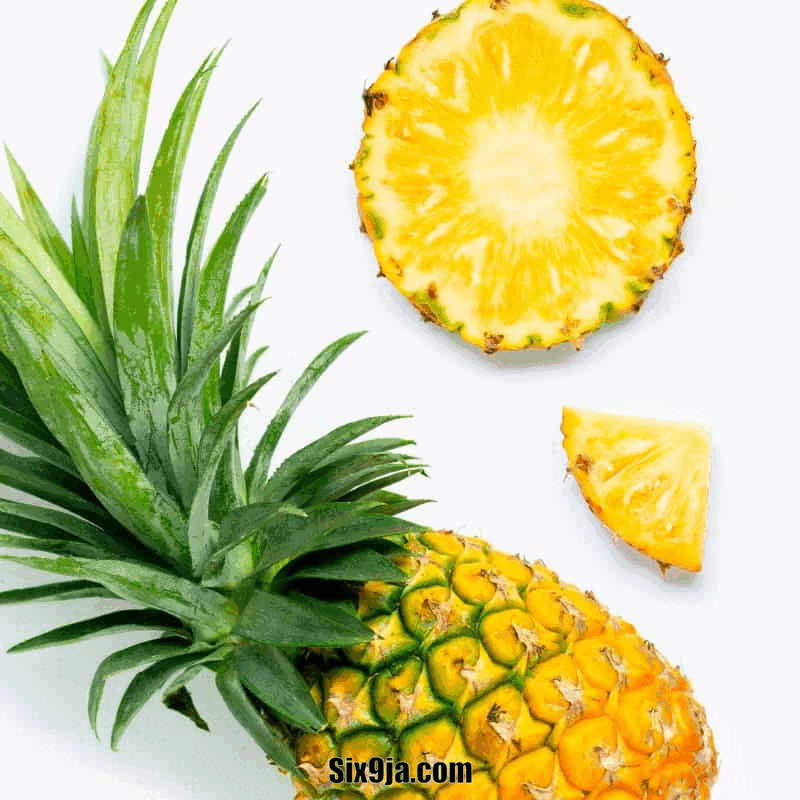
Pineapple
Pineapple chunks can be found in savory meals like pizza toppings or as a grilled ring on hamburgers as well as in sweet dishes like fruit salad. The traditional dishes hamonado, afritada, kaeng som pla, and Hawaiian haystack all contain pineapple. Ice cream, jam, yogurt, and pastries all contain crushed pineapple. The main component in cocktails like the pia colada and the drink tepache, as well as being served as a beverage, is pineapple juice.
On a thick, fleshy stem, the plant has 30 to 40 stiff, succulent leaves that are closely arranged in a rosette. On a flower stalk measuring 100-150 mm (4-6 inches) in length, a determinate inflorescence develops on commercial types 15–20 months after planting.
12. Lemons

Lemons
Many different dishes and beverages contain lemon juice, rind, or peel. Lemon liqueur, lemon curd, and marmalade are all made with the entire lemon. Lemon rind and slices are used as garnishes on both food and beverages. Lemon zest, which is the fruit’s grated peel, is used to flavor rice, baked goods, puddings, and other foods.
Cocktails, soft drinks, and lemonade all contain lemon juice. Its acid neutralizes fish amines by turning them into nonvolatile ammonium salts, and it is utilized in fish marinades. The acid partially hydrolyzes tough collagen strands in meat, making it more soft. Lemon juice is frequently added to pancakes in the United Kingdom, particularly on Shrove Tuesday.
Skin cells that produce oil are used to make lemon oil. The cells are broken apart by a machine, and the oil is removed using a water spray. After that, centrifugation is used to filter and separate the oil/water mixture.
11. Plums
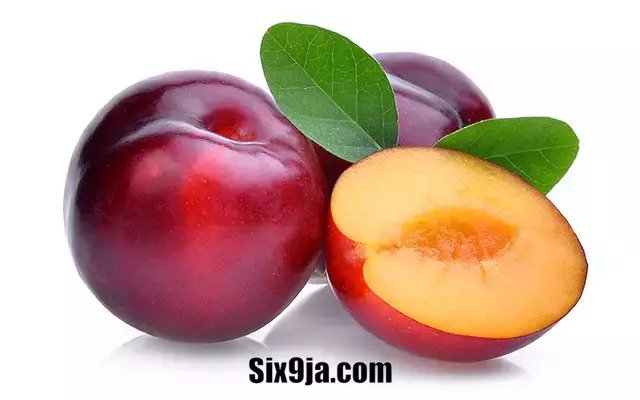
Plums
Peaches, nectarines, and apricots are all members of the same fruit family as plums. Yet, plums have a considerably wider variety than their cousins the stone fruits. They can be big or little, with pink, yellow, or orange flesh and red, purple, green, or orange skin.
The anti-inflammatory properties of plums have been demonstrated to improve cognition. For even more calcium and magnesium, which have been connected to lowering your risk of osteoporosis, use dried prunes. Alternatively add some halved fresh plums to the grill while cooking chicken or a steak; the heat will enhance their taste.
Those who drank prune juice and ate prunes had lower blood pressure than the control group who did not.
10. Oranges

Oranges are high in vitamin C, but did you know they also contain anti-inflammatory, antioxidative, and anti-cancer characteristics? According to a study published in Chemistry Central Journal, citrus fruits have anti-inflammatory, antioxidative, and anti-cancer capabilities. Oranges are delicious on their own, in a salad, or in cooking or baking. Every type of orange contains more than 100% of your daily vitamin C needs. This is the most of any citrus fruit. All you have to do to obtain this important vitamin is peel and consume.
Sweet oranges have also given rise to a number of hybrids, the most notable of which being the grapefruit, which sprang from a sweet orange x pomelo backcross. The orangelo was created as a consequence of a natural hybrid between grapefruit and sweet orange. Backcrosses between sweet oranges and mandarin oranges or tangerines, both natural and manufactured, have resulted in the tangors, which include the clementine and Murcott. Complexer crosses have also been created.
9. Cherries
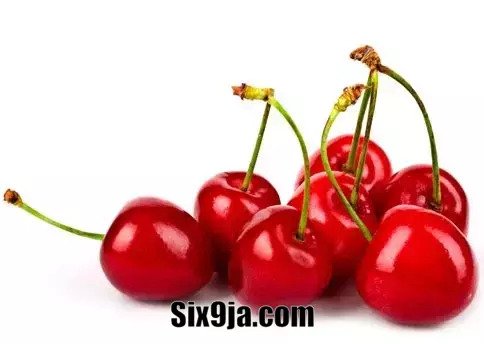
Cherries
Sweet cherries, sour cherries, and dukes, which are crosses of sweet and sour cherries, are the most common types of cherry farmed for their fruit. Sweet cherry trees are huge and upright, reaching heights of up to 11 meters (36 feet).
Cherries are classified as a drupe, which is a type of fruit. Drupes are made up of a thin layer of skin, a fleshy body, a hard stone, and an inner seed. Because of the hard stone in the middle, they’re commonly referred to as “stone fruits.” The mesocarp is the part of the fruit that you eat. It has a juicy, sweet flavor to entice animals to eat the fruit and distribute the seeds.
8. Grapefruit
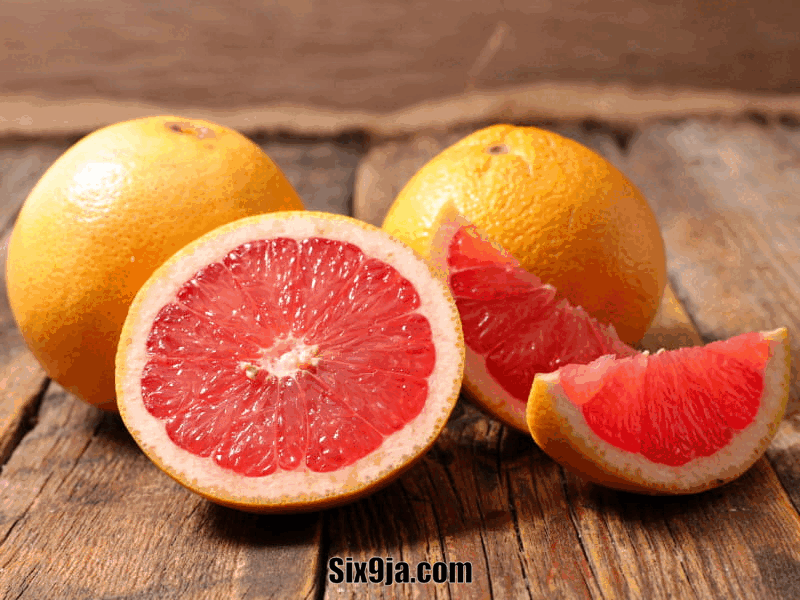
Grapefruit
Grapefruits are a popular host for fruit flies like A. suspensa, which lay their eggs in overripe or damaged grapefruits. These flies’ larvae then ingest the fruit to gather nutrition before developing into pupae. This parasitism has cost Central American and southern North American nations millions of dollars in economic losses.
Grapefruit is high in antioxidants such as vitamin C. They can aid in the reduction of free radicals, which are thought to be the cause of cancer. Grapefruit is high in water and fiber. A small grapefruit weighs 200 g and contains 182 g of water and 2.2 g of fiber. Water and fiber can both assist to prevent constipation and promote regularity in the digestive tract. conclude that vitamin C may aid in the prevention of solar damage and aging. They also discover a link between a person’s vitamin C levels and their consumption of fresh fruits and vegetables.
7. Papaya (Pawpaw)
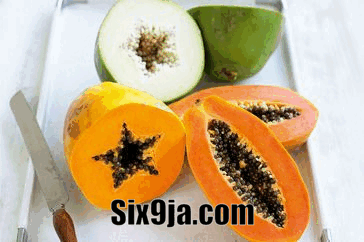
Papaya (Pawpaw)
Because of its latex concentration, the unripe green fruit is frequently eaten cooked. In Vietnam and Thailand, it is usually consumed uncooked. The ripe papaya fruit is normally eaten uncooked, without the peel or seeds. The papaya’s black seeds are edible and have a pungent, peppery flavor.
Papayas are a soft, fleshy fruit that can be used in a variety of ways in the kitchen. In this section, we will go over the health benefits, uses, how to include more of them into your diet, and the nutritional worth of papayas.
Because it includes vitamin A, a nutrient necessary for the creation of sebum, which keeps hair nourished, papaya is also fantastic for hair. The development of all body tissues, including skin and hair, depends on vitamin A. For the creation and maintenance of collagen, which gives skin structure, an adequate intake of vitamin C is required, which papaya can offer. One medium papaya, a great source of vitamin C, has 224 percent of the daily required amount.
6. Mango

Mango
Mangoes are typically sweet, but the flavor and consistency of the flesh varies depending on the cultivar; some, like Alphonso, have a soft, pulpy, juicy texture comparable to an overripe plum, while others, like Tommy Atkins, are firmer, like a cantaloupe or avocado, and have a fibrous consistency.
Many different cuisines use mangoes. In Bengali cuisine, sour, unripe mangoes are used in chutneys (such as mango chutney), pickles, daals, and other side dishes. Mangoes are used to make the seasonal beverage known as aam panna. With cooked rice, mango pulp can be prepared as jelly or boiled with red gram dhal and green chillies. Popular throughout South Asia, mango lassi is made by combining ripe mangoes or mango pulp with buttermilk, sugar, and salt. Moreover, curries can be made with ripe mangoes. With chapatis or pooris, people typically drink aamras, a famous thick mango juice mixed with milk or sugar.
5. Cucumber
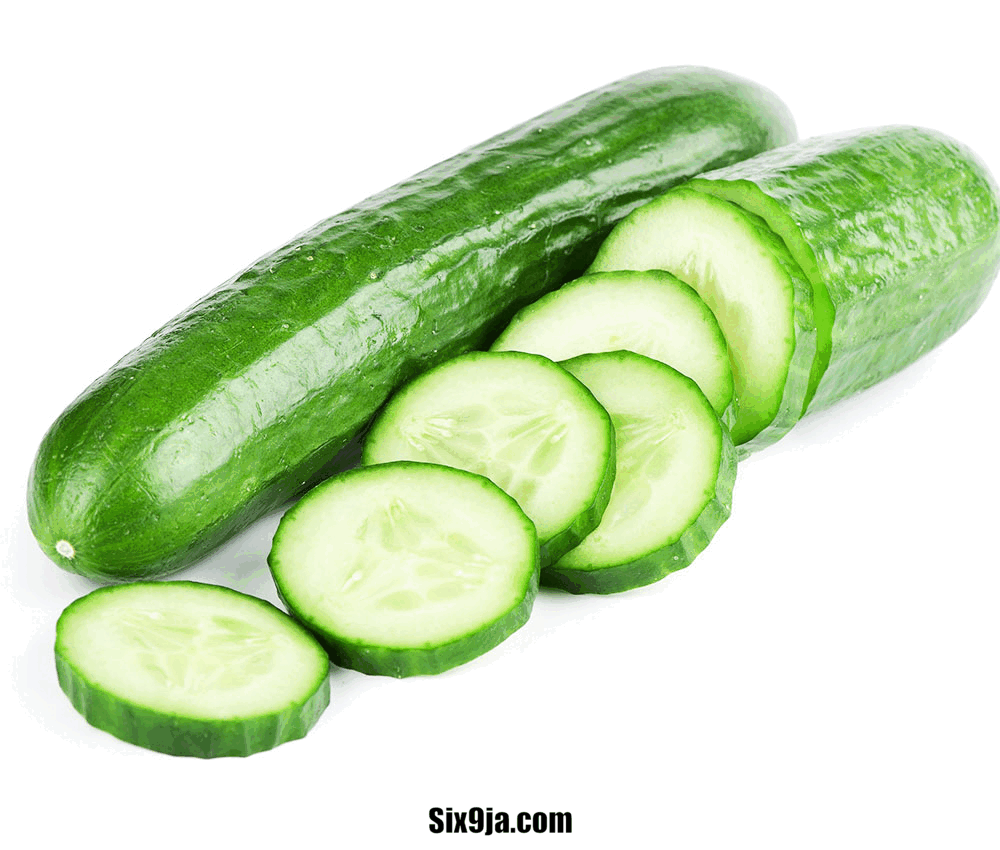
Cucumber
The majority of a cucumber is water, but it also contains vital electrolytes. They can aid in avoiding dehydration in hot conditions or following exercise.
Cucumbers can be prepared in a variety of ways, but slicing, pickling with fresh herbs like dill, and layering on sandwiches are the most popular. Cucumbers are also prepared in stir-fries, steaming soups, and curries in a number of other food cultures, including Vietnamese, Korean, Thai, and local Indian cuisines.
Fresh cucumbers nevertheless include vitamin C, vitamin K, and potassium despite being less nutrient-dense than other fruits. They also contain dietary fiber, vitamin A, vitamin B6, thiamin, folate, pantothenic acid, magnesium, phosphorus, copper, and manganese. Garde manger is a type of decorative food art that frequently uses cucumbers.
4. Coconut

Coconut
The only surviving species of the genus Cocos is the coconut tree (Cocos nucifera), which belongs to the Arecaceae family of palm trees. The word “coconut” (or the obsolete “cocoanut”) can refer to the entire coconut palm, the seed, or the fruit, which is a drupe and not a nut according to botanical definitions. Because of the three depressions that mimic facial features on the coconut shell, the name coconut is derived from the old Portuguese word coco, which means “head” or “skull.” They are a symbol of the tropics and are common in coastal tropical areas.
The coconut fruit is a drupe, not a real nut, according to botany. It has three layers: the exocarp, mesocarp, and endocarp, just as other fruits. The glossy outer skin, known as the exocarp, is often yellow-green to yellow-brown in hue. The mesocarp is made of coir, a fiber with numerous conventional and industrial use. The “husk” of the coconut is made up of the mesocarp, the exocarp, and the endocarp, which together make up the hard “shell” of the coconut.
3. Banana
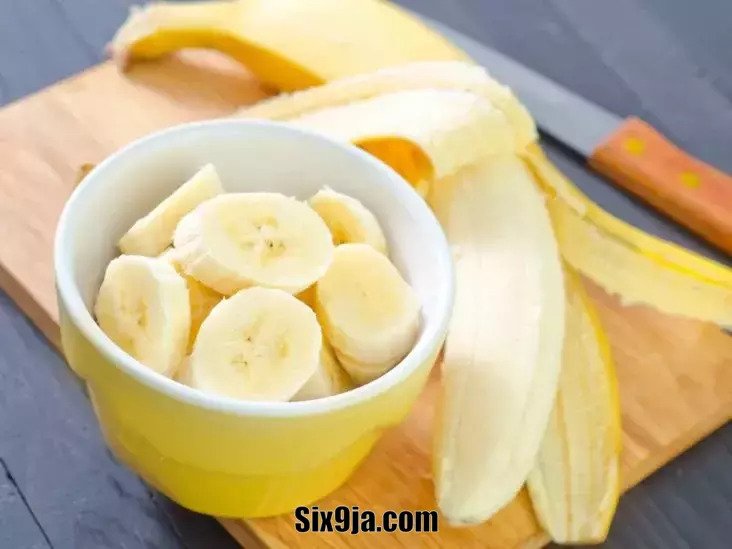
Banana
Bananas are a simple grab-and-go snack that are high in soluble fiber and can decrease cholesterol. Sliced bananas topped with a tablespoon of chia seeds, walnuts, and morning oats will give them an extra heart-healthy boost. A filling meal full of fiber, vitamin B6, potassium, magnesium, vitamin C, and manganese, it is also quite energizing.
The plant that yields the fruit is also known by the popular name “banana.” This also applies to other Musa species including the Fe’i banana, Musa velutina, and the pink and scarlet bananas (Musa coccinea). It can also be used to describe individuals from the genus Ensete, including the snow banana (Ensete glaucum) and the crucial false banana (Ensete ventricosum). Both genera belong to the Musaceae subfamily of the banana.
Bananas are the top-selling product at Walmart and are consumed by Americans in 3 million tons annually. (1) Considering that the United States produces less than 1% of the world’s bananas, this is a significant amount and one of the reasons the country imports the majority of its bananas. (3)
2. Watermelon
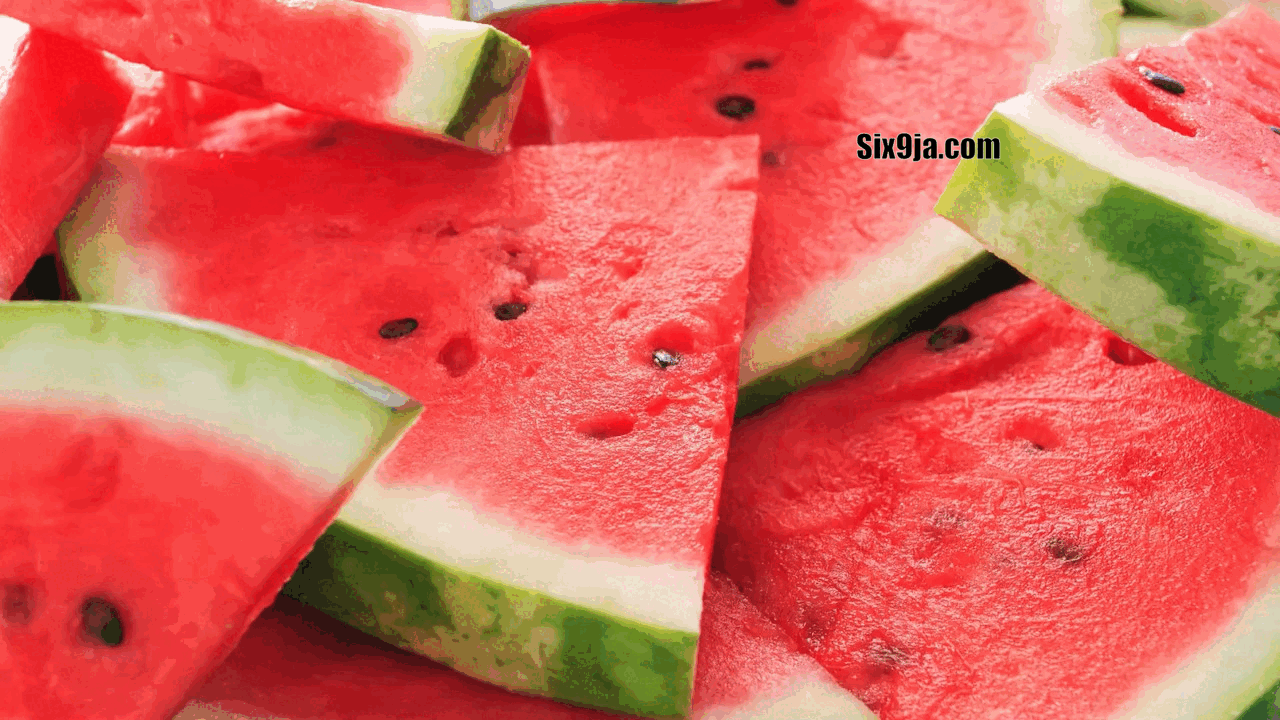
Watermelon
A sweet and cooling summertime snack with few calories is watermelon. In addition to providing critical elements including vitamins, minerals, and antioxidants, it also supplies hydration.
For its large edible fruit, which is a berry with a hard rind and no internal divisions, watermelon is grown in hospitable climates from tropical to temperate regions all over the world. This fruit is known botanically as a pepo. Although there are kinds without seeds, the sweet, juicy flesh is typically deep crimson to pink and contains many black seeds. The fruit can be consumed raw, pickled, or cooked, and the rind can also be consumed. Moreover, it can be drunk as juice or a component of mixed drinks.
Watermelons are rich in water and include some fiber. By preventing constipation and promoting regular bowel movements, these nutrients aid in the promotion of a healthy gut.
1. Apples
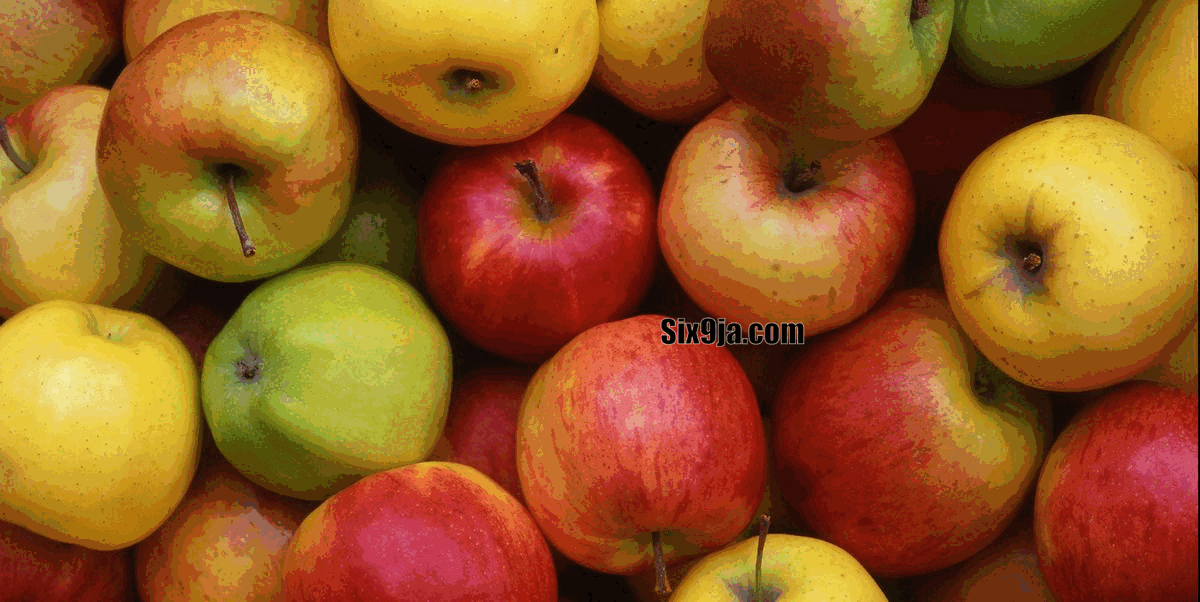
Apples
A fruit produced by an apple tree called an apple is edible. The most widely cultivated species in the genus Malus is the apple tree, which is grown all over the world. The tree’s wild parent, Malus sieversii, can still be found in Central Asia, where the tree first appeared. Apples have been cultivated for thousands of years in Asia and Europe, and European settlers introduced them to North America. In various cultures, including Norse, Greek, and European Christian tradition, apples have religious and mythological significance.
In fact, eating an apple a day might keep your cardiologist at bay. Research suggests that regularly eating apples may lower total cholesterol, which may lower your risk of heart disease. That’s because apple skins contain phenolic compounds, which are antioxidant compounds that support healthy cellular activity and normal blood flow. They are a smart family staple because they combine phytochemicals, fiber (about 5 grams per medium apple), and vitamin C. They can also be eaten in a variety of ways, from plain slices dipped in nut butter or yogurt to ones that have been baked with raisins and almonds within.
Conclusion
These are the 20 fruits that can prolong your life and keep you healthy. You can build strength! when you consume every one of the 20 fruits we’ve listed for greater health! You can have some of this fruit for breakfast.
Apples go nicely with a variety of morning dishes, including yogurt, nut butter, and oatmeal. Wyosnick advises eating an apple with a slice of bread spread with peanut butter or topping a bowl of oatmeal with stewed apples.
Do you find Six9ja useful? Click here to give us five stars rating!
